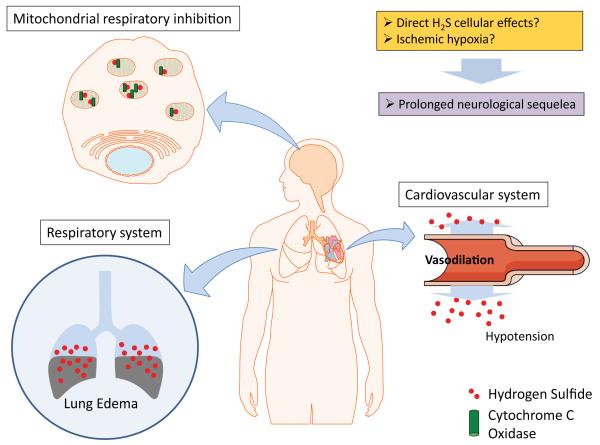Figure 4.
Proposed pathophysiology of H2S -induced neurotoxicity. Acute exposure to high levels of H2S induces lung edema, leading to reduced oxygen absorption in the lungs. H2S also affects the cardiovascular system, inducing vasodilation leading to hypotension. Together, both lead to development of ischemic hypoxia in the brain. The function of cytochrome c oxidase in the mitochondrial electron transport chain is also inhibited by H2S, leading to reduced ATP production. Collectively, these pathophysiologic effects, coupled with direct cellular effects, account for the acute neurotoxic effects and the subsequent development of prolonged neurological sequelae.

